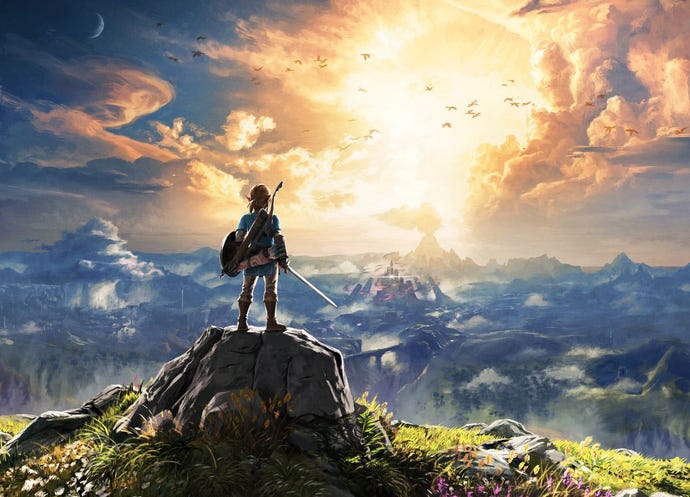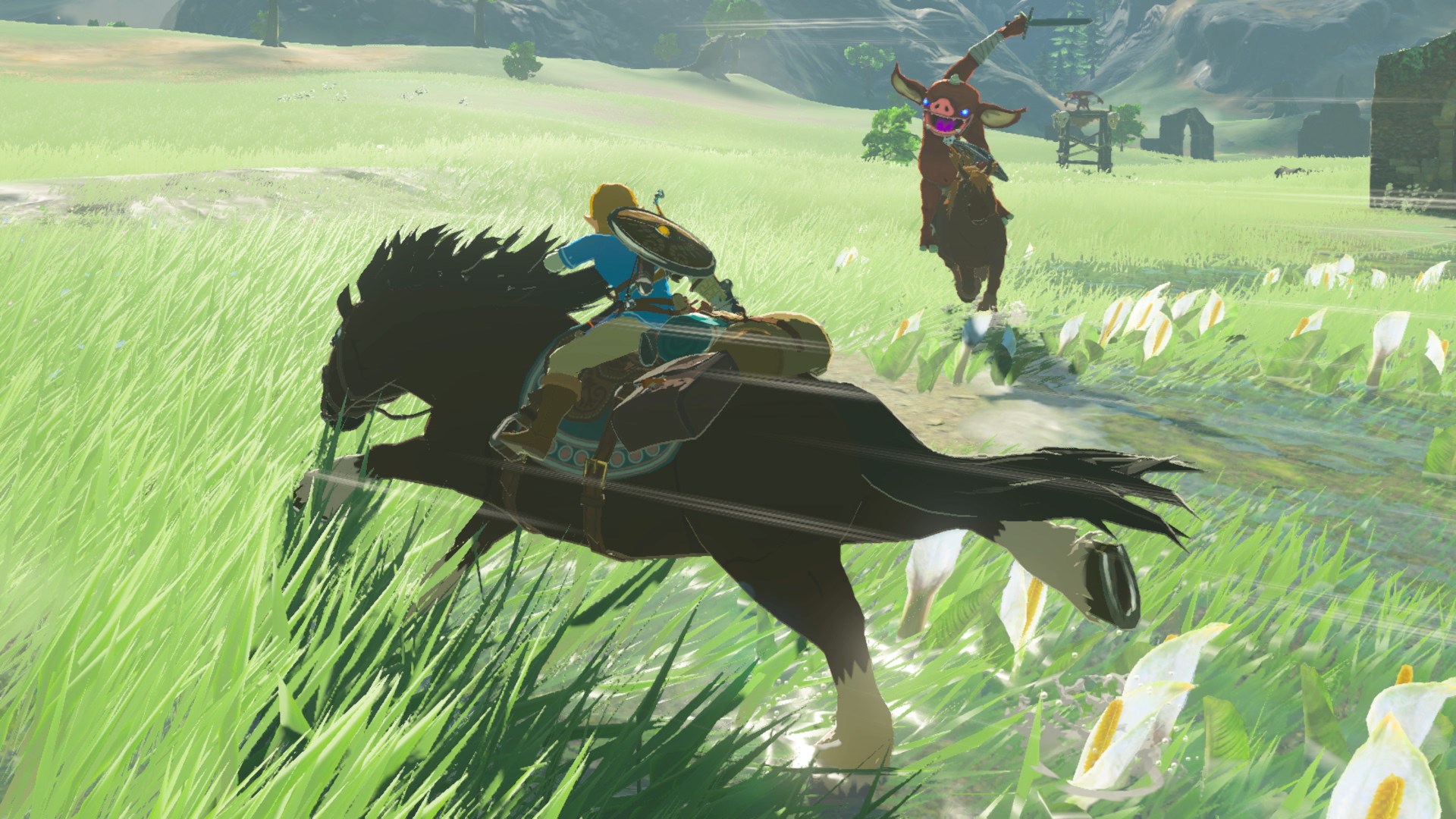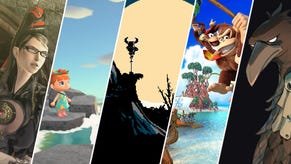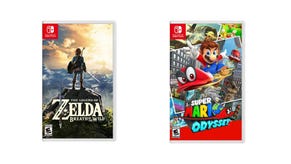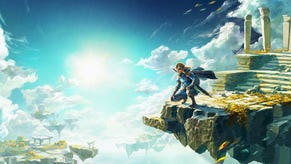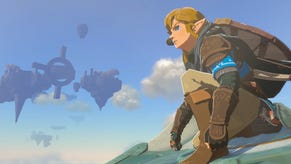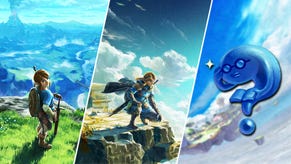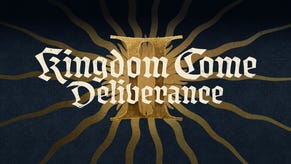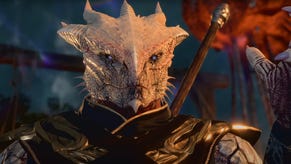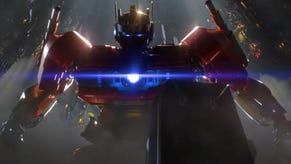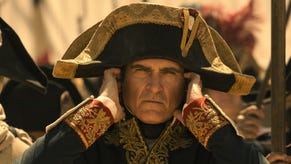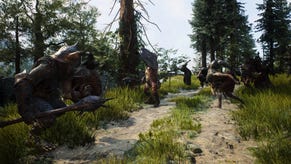The Legend of Zelda: Breath of the Wild review - giving Ocarina of Time a run for its money
By stepping back from many Zelda traditions, Nintendo has managed to make something truly special.
"Breath of the Wild pushes aside much of the streamlining that's crept into the series over the years, doing away with a bunch of tradition alongside it. It's a scary prospect, but also absolutely works out for the best."
Wild is a pretty good way to describe the new The Legend of Zelda game. It's mad - mad in its scope, in its ambition. It's crazy, in how it tosses aside so much of the recognisable Zelda formula in search of something new. More than anything else it is courageous, the sort of bold move of which Link himself would be proud.
The phase "back to its roots" is one that's way too overused in the current entertainment climate. Even I'm guilty of it from time to time. Breath of the Wild actually earns that cliche, however.
The heart of this game is the original 31 year old Legend of Zelda, with its open-ended go anywhere and do anything mentality and its unforgiving difficulty. Breath of the Wild pushes aside much of the streamlining that's crept into the series over the years, doing away with a bunch of tradition alongside it. It's a scary prospect, but also absolutely works out for the best. If Nintendo wanted to and if the Zelda lore were more connected, they could've easily branded this a reboot.
Breath of the Wild is an example of Nintendo at its most self-aware. This incidentally is also when the company is often at its best. It borrows not only from its own history but from currently popular peers. Tower climbing is an obvious addition to an open world Zelda, but somehow it has a Nintendo touch where it doesn't fill in location names or icons, leading you to look out from atop the tower with binoculars to tag interesting structures or destinations in the far distance. RPG-style armour and loot systems are new for Zelda too, much of this designed to offset the now far more difficult combat.
The whimsical exploration of an open Hyrule with a broad range of terrain feels very aware of Skyrim, while weapon and item durability and collecting ingredients, creatures and other tools for cooking feels like Nintendo took a good long look at the massive growth of the survival genre. This Zelda has a little bit from all these influences and more besides.
Some have worried that this means the core of Zelda - puzzle-solving dungeons - will be diluted. It's true that Breath of the Wild doesn't have the typical Zelda outlay of eight-plus dungeons to tackle, but what you get instead is a far more accomplished world. Spread out all over the place are shrines. There are over 100 of these, and for every 4 completed you can upgrade your health or stamina. A handful focus on combat but the vast majority of them are focused entirely on puzzles. Rather than the puzzle content being concentrated into a few large levels it's been spread out across the game world into these one or two-room mini dungeons. There's just as much dungeon action as any Zelda, but by spreading this content out you're encouraged to get out in the world to explore. For some shrines the puzzle is in finding it in the first place, many featuring some genius environmental puzzle solving out in the overworld.
Even the more traditional dungeons that remain have a significantly different angle. Each of the four is a giant mechanical animal, and each beast's innards are more open than previous Zelda dungeons. Not one has a small key or boss key to worry about, but rather a series of locations you need to reach and switches you need to flick. The gimmick for each is different: each robotic animal is stomping, swimming or flying around the open world, and you can move their body parts to reorient pieces of the dungeon or otherwise significantly change the dungeon's layout. This makes for some cool puzzle-solving moments, like tilting the wings and opening windows of the bird beast in order to let gusts of wind from outside assist you.
"The moment when you don't have another thing on your personal check-list of things to do in Breath of the Wild is rare, because there's always something new on the horizon you can tackle."
These four dungeons are optional parts of the main quest - but then again, almost everything is optional. If you want to run straight from the starting point to Hyrule Castle you can - you just won't survive. The speed run community for this game is likely going to be fascinating. Even the Master Sword, so prominent in trailers, is an optional pick-up that actually requires quite a bit of investment to get - but that makes getting it all the more special.
Instead of focus on a main story progression, Nintendo wants you to explore. Everything is informed by this desire. Weapon durability exists to make you consider every encounter carefully: despite hating weapon durability in many games, here it always gave me pause: do I want to use my good sword on this goblin camp? Or should I play smarter to take them out one-by-one with weaker weapons? Panic and dilemma early on about which weapons to keep and which to throw away every time I found a new one drove me to explore for Korok Seeds, the collectable that allows you to upgrade your inventory space. Durability also means you're constantly on the hunt for a better weapon, and chests are hidden absolutely everywhere.
Combat is difficult, but also challenging is Hyrule itself. Some mountains are too much to climb with natural stamina, or some areas are too hot or cold to traverse without the proper protection. Rather than a series of tunics there's proper mix-and-match armour sets with stats and status buffs, and on top of that cooking can provide significant buffs. Both of these encourage you to explore: you might find valuable new gear in shrines, or cash to buy said gear, and ingredients for cooking up new recipes to provide new buffs are absolutely everywhere.
The moment when you don't have another thing on your personal check-list of things to do in Breath of the Wild is rare, because there's always something new on the horizon you can tackle. Even the story is mostly delivered by optional flashbacks - and even these are located by exploring various important places from Link and Zelda's past. Everything links back into this desire to get you exploring - shrines, cooking, weapon durability, armour and other gear.
"It's impressively dense not just in terms of world size and the content within it but also in terms of how those elements interact with each other."
Part of what makes this possible is that Breath of the Wild does away with the traditional game-long smattering of items and simply drops every single item needed to actually complete the game into your lap in the first hour. In Zelda terms there are five traditional items - a glider, bombs, a magnet that can be used to pick up metal objects, a freeze beam that can make platforms out of ice, and stasis, a power that freezes things in place and allows you to store kinetic energy in them to send them flying no matter their weight. There's also four powerful special powers unlocked by finishing each dungeon - but like the dungeons themselves these are optional and simply help to take some of the pressure off.
This might not sound like much, but Breath of the Wild does a fine job using these items as a basis for all its puzzles. Some one-shot mechanics such as electricity and physics puzzles show up a fair bit too, but this smattering of items proves to be incredibly useful. Each has far more utility than many past Zelda items - they avoid that problem of Twilight Princess' Spinner item, which is amazing for an hour and then never useful again. On top of that many classic Zelda items such as magic rods and wands and boomerangs show up as regular weapons, complete with their unique properties.
Where Breath of the Wild impresses most and feels most Nintendo is in how many of its systems merge and work together. This might be something simple such as placing a bomb and then using a deku/korok leaf to create gusts of wind to blow it towards enemies, or it might be how if you chop a tree down in the right way you can make a makeshift raft from the trunk to float downstream. This version of Hyrule is in itself a puzzle, with the game constantly asking you to set yourself a new destination and find an exciting way to get there. Along the way you might find an enemy camp, some Koroks, perhaps even a Great Fairy Fountain - they're all around, hidden away.
This is where the game is most special; it's impressively dense not just in terms of world size and the content within it but also in terms of how those elements interact with each other. NPCs have Majora's Mask style schedules they adhere to, but those schedules are also altered by the random changes in weather. Rain will send people running and change their dialogue, while sun might make people stop chopping wood and relax a while. Items can often be combined in unexpected ways, and the game has many little logic rules of its own that end up adding up to something rather special.
Need a boost? Lighting grass on fire creates an updraft of hot air you can ride with your paraglider. You could set that fire any number of ways - a torch, a fire rod, fire arrows, flint and wood, or even just a lucky strike of lightning. One piece of loot from Octoroks basically functions as a balloon - imagine the things you could attach that to! Rain serves to dampen your footsteps if you're going for a stealthy approach - and pretty much every major mechanic has armour, food or both to buff its use as well.
The few frustrations I had such as a few obscure puzzle solutions and some fairly weak boss encounters inside dungeons are more than outstripped by the positive. Figuring out new ways to use the items, systems and powers the game gives you together often makes you feel like an absolute genius and almost always leaves you grinning wildly like an idiot. These are the kinds of feelings I love most in games.
"Polished to a ludicrous degree, this is a different kind of game but still one that gives Ocarina of Time a run for its money."
This brilliant open world is wrapped in a decent story that, as mentioned earlier, is largely optional. One way Nintendo appears to have skirted around the issue of not wanting to stop the player projecting themselves into Link is to make it easy to divorce yourself from the story and, weirdly, by simplifying it. Acted much of it may be, but Breath of the Wild's narrative is simpler than Skyward Sword, with its antagonist a snarling evil beast who is just inherently evil - motivation isn't a worry. The voice work is pretty standard Nintendo stuff, cartoon-like as it is in Fire Emblem and Kid Icarus, but the text translation is remarkably well-done, which helps that along. I also think it's a fun take on the Zelda lore that deliberately distances itself from much of the tangled lore for something of a fresh start - it works.
The game is a looker in spite of the Switch (where we tested) obviously not being as powerful as the other major machines - Nintendo has that insane secret sauce that means so many of their games look excellent on the strength of their art design alone. Breath of the Wild follows that trend. The game struggles to maintain its frame rate in intense situations - a heavy assault on a packed enemy base in the rain with arrows and spells flying might make it choke a bit, for instance - but on Switch at least this is rare enough to not concern.
Breath of the Wild is special. Ocarina of Time is of course that earth-shattering, industry-changing high bar to meet, and it's worth saying that this is a different kind of game. Where Ocarina of Time (and Mario 64) had to reinvent and redefine genres, Breath of the Wild doesn't aim to do that. Instead it takes ideas we've seen before both in Zelda and elsewhere and mixes them together, aiming to deliver them in a better way than we've seen before.
Your jaw isn't going to drop in that Ocarina sense, but you are going to smile a lot. Hours are going to simply melt away. Polished to a ludicrous degree, this is a different kind of game but still one that gives Ocarina of Time a run for its money. After Twilight Princess and Skyward Sword, which I found formulaic and awful in turn, it's quite a stunning change.
The Legend of Zelda: Breath of the Wild is, without a doubt, one of the best games of the last decade. Taming that legacy seemed an impossible task, but they've done it.
